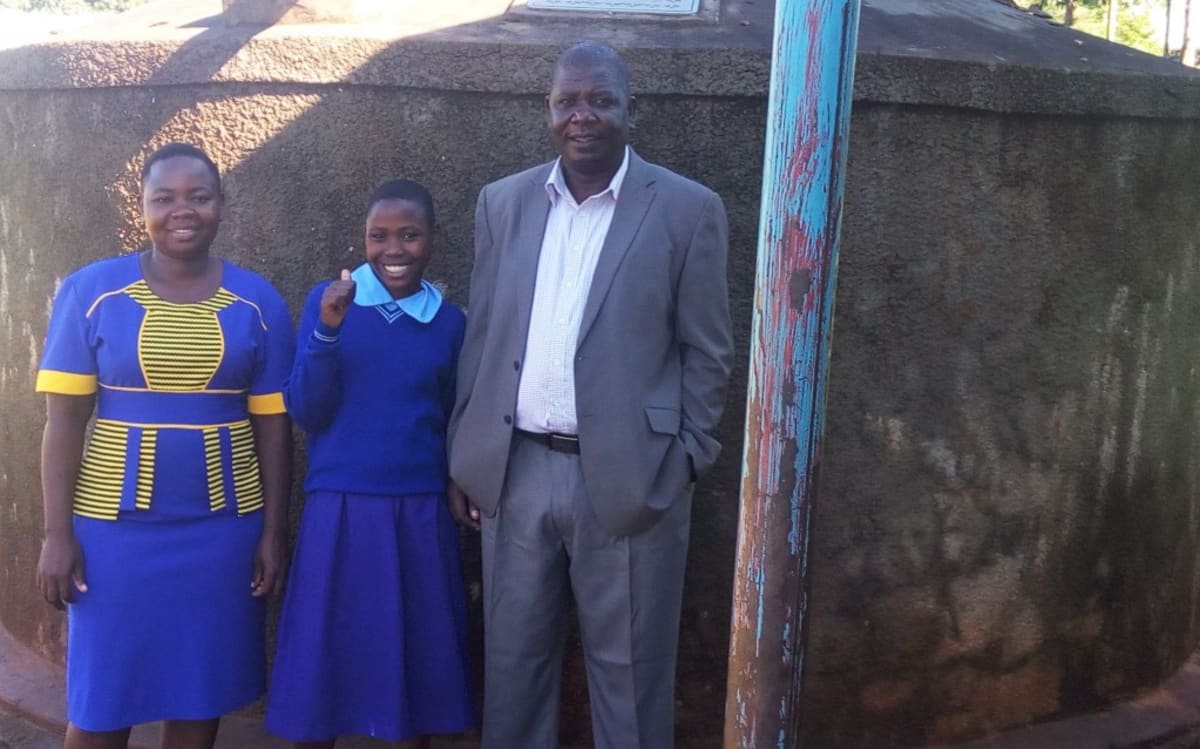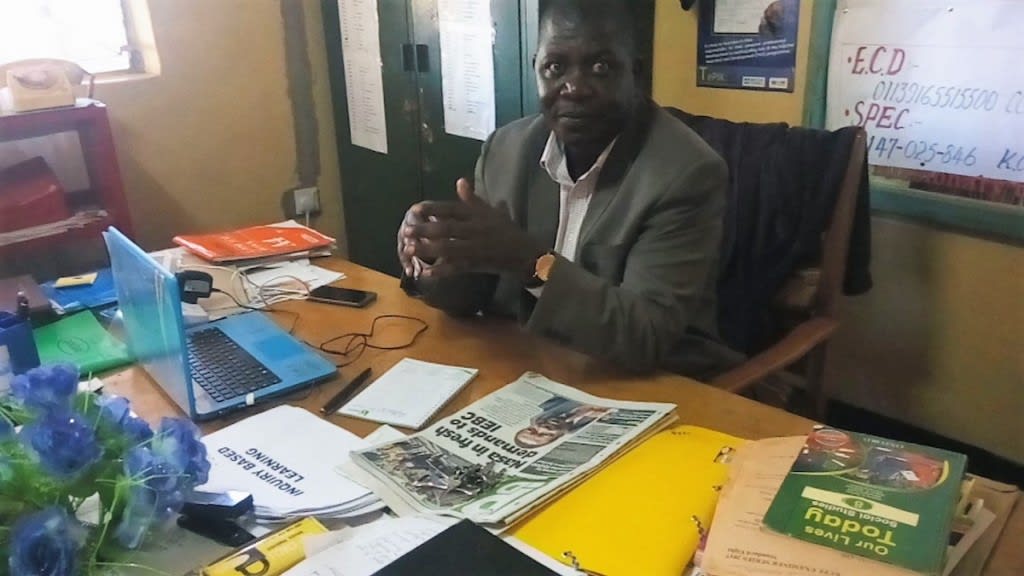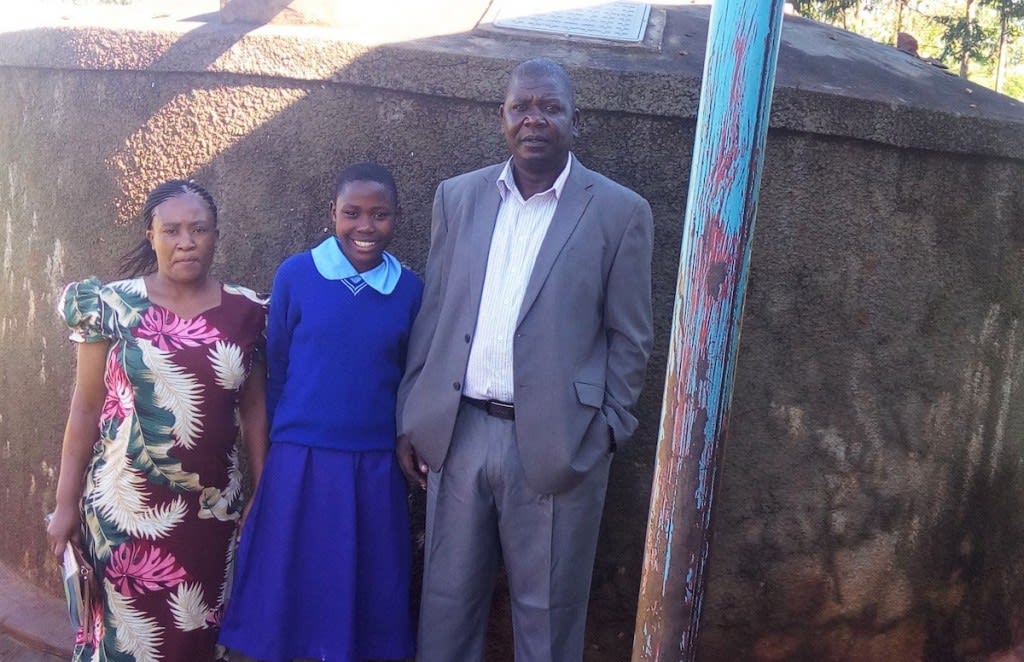This project is a part of our shared program with Western Water And Sanitation Forum (WEWASAFO). Our team is pleased to directly share the below report (edited for clarity, as needed).
Background Information
Kakamega Township Primary School is located in Bukhungu location, Shirere ward, Lurambi sub-county of Kakamega County. It was started by missionaries in the year 1939, long before Kenya attain its independence in 1963. According to information gathered from the school, missionaries began with the aim of providing education to the entire community. Community members, on the other hand, resisted the change. The missionaries then had no other option than to entice pupils with sweets and sugar. A few students became motivated to attend school, but most of them ran away thinking that the sugars given were human brains. Having tested the sweetness of the sugar, a few students finally returned to their villages and told the other children what was really happening at school. Little by little, the community members began accepting this change. Starting with two classrooms and seven pupils, the school has now grown to a population of 1200 pupils with 24 classrooms. This population is composed of 467 boys and 537 girls in the primary section, 90 pupils from the special needs unit and 106 pupils in the Early Childhood Development Centre (ECD). The school now has 29 teachers out of which 22 are female and seven male, and five support staff: two watchmen, a secretary, and one groundsman. (Editor’s Note: While this many people may have access on any given day, realistically a single water source can only support a population of 350-500 people. This community would be a good candidate for a second project in the future so adequate water is available. To learn more, click here.)
Kakamega Township is a day primary school. Since it is a learning institution, most of the time is used for academic purposes. The remaining time is used by pupils to fetch water from a nearby stream. Pupils report to school at 7AM and return home at 5PM. In between classes, the pupils have break time which is mostly used to fetch water. There is also a lunch and games break.
This school was referred to WEWASAFO by the head teacher of Muraka Primary School after they saw how successful their own rainwater catchment project was.
The Current Source
Despite a large student body, the school still has no reliable, safe water source within its compound. The only available water source in the school compound is a 2000-liter plastic rainwater catchment tank. The water from the tank is not enough to serve the entire population, especially considering that the school has a feeding program for every single student. "Sometimes, lunch is not served on time since we rely on pupils to go and fetch water from the stream during break times. Since the pupils are not supervised when they go to fetch water, most of them end up playing on the way hence they delay to avail water for use in the school," the cook admits. A lot of precious time for study is also wasted as students make several trips to the stream located 500 meters away from school. This has contributed to students' low performance in school. Cases of waterborne diseases like typhoid and diarrhea have also been reported.
The stream water is fetched from is undoubtedly contaminated. Some community members wash clothes or motorbikes in the water, bathe themselves, and water their animals. Unfortunately, the students and staff have not been treating this water before drinking.
Sanitation Situation
Access to adequate sanitation facilities in the school is also a challenge. 10 latrine doors are available for use by girls and eight doors and one urinal pit are available for use by boys. Half of he boys' latrines are full. Either way, this is still far below the World Health Organization's recommendation that there should be one door per 25 girls and one door per 30 boys. In the case of Kakamega Township Primary School, one door is serving 54 girls and one door is serving 47 boys. Therefore, long lines are witnessed during break, leading again to a cut into class and a loss of precious study time.
Training Sessions
Training will be held for two days. The facilitator will use PHAST (participatory hygiene and sanitation transformation), ABCD (asset-based community development), CTC (child to child), lectures, group discussions, and handouts to teach health topics and ways to promote good practices within the school. The CTC method will prepare students to lead other students into healthy habits, as well as kickstart a CTC club for the school.
Construction
Having witnessed the challenges faced by pupils, we proposed that the school should indeed benefit from a project funded by The Water Project and implemented by WEWASAFO. This project is ideal for the school since they will be able to collect and store a lot of rainwater with a new 30,000-liter tank. Kakamega experiences high rainfall, so the school will not have any problems harvesting rainwater. The girls will also have an additional three VIP latrines, as well as the boys. The school is already willing to contribute the locally available materials to make this project a success. These materials include clean sand, ballast, hardcore, empty sugar sacks, and poles. Locals will also unite to sink two large pits for the six new latrine doors to sit over. Two hand-washing stations will be delivered and installed, fitted with taps, and then managed and maintained by the CTC club.
Project Results: CTC Training
The CTC training was held February 11-12. A letter was written to the headteacher informing him that the CTC training would be held at the school according to the agreement made between the school and WEWASAFO. The letter was also requested that the headteacher arrange for the training venue within the school compound as well as mobilize its participants. The participants were drawn from both pupils and teachers already in charge of sanitation. For management purposes, two pupils each were drawn from classes five, six, and seven.
All those invited ended up attending training, including others who were not invited. All who attended were equipped with skills and knowledge relevant to health and hygiene. The training was considered very successful since all that was planned for was achieved, and by the end, all participants were happy and stated that they had learned a lot. Teacher Miheso said, "I have learnt a lot from this training. This information I have right now, I would not have gotten anywhere else. As a teacher in charge of sanitation in the school, hygiene and sanitation situation will never remain the same. We are going to encourage the use of locally available materials so that we can improve health in the school. Thank you so much for the great work you are doing. God bless you."
Project Results: Rainwater Catchment Tank and VIP Latrines
New VIP latrines have been installed and are now in use. Their installation was delayed by a week because the artisan lost his uncle and had to return home. These latrines have already helped reduce the long queues previously witnessed during break.
Two new hand-washing stations were installed, and both students and staff were trained on how to use and maintain these.
Construction for the 30,000-liter tank began on January 14. The work team began by clearing the site of any brush or debris. Once clear, they could set and cast the foundation slab. Construction of the superstructure could follow, and was finished by covering it with a roof. Manholes, pipe inlets, discharge pipes, vents, and screens were then fitted. Lastly, proper drainage was ensured.
Access to safe water from the tank will reduce outbreaks of waterborne disease. The tank will also save students time that was previously used for fetching water; the saved time can now be invested in academics. Johnson Razinga, one of the trained CTC club members, was very happy with the completed project. "I am very happy and satisfied with this project in our school. The teachers will no longer have to send me during break time to go to the stream to fetch water. At least I will get enough time to play and also study. Carrying a big jerrycan full of water on my head and walking for long distance is no more. All thanks to The Water Project. God bless them."



 Rehabilitation Project
Rehabilitation Project






















 Betty had a chance to speak with Head Teacher Robert Opwora as well. “Since the project was completed, the cost of paying water bills has gone down and the money can be used to do other development activities in the school. There is a great improvement in terms of performance as pupils now have time to concentrate on their school work. There are no longer cases of water borne diseases amongst the pupils,” he shared.
Betty had a chance to speak with Head Teacher Robert Opwora as well. “Since the project was completed, the cost of paying water bills has gone down and the money can be used to do other development activities in the school. There is a great improvement in terms of performance as pupils now have time to concentrate on their school work. There are no longer cases of water borne diseases amongst the pupils,” he shared.